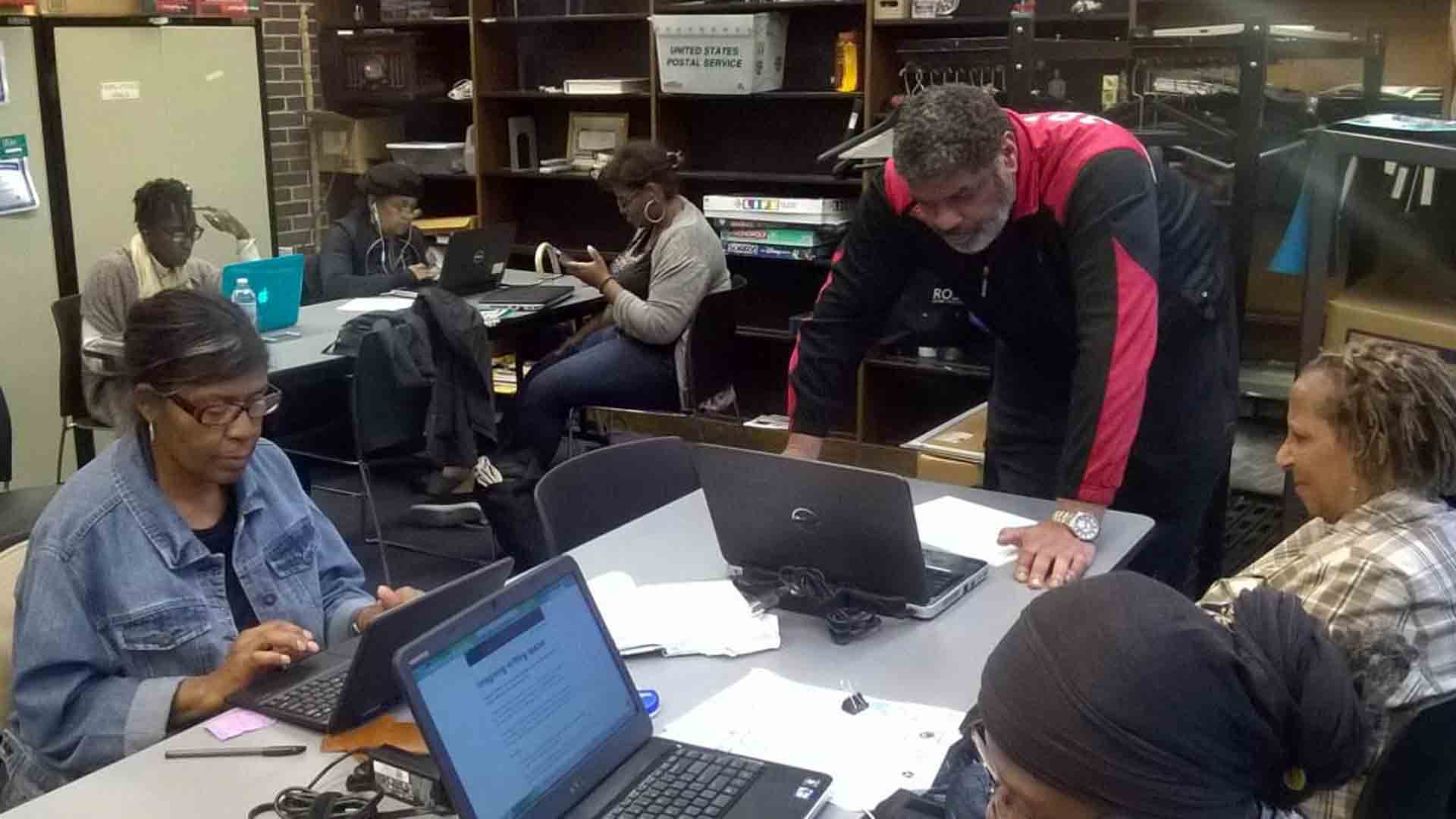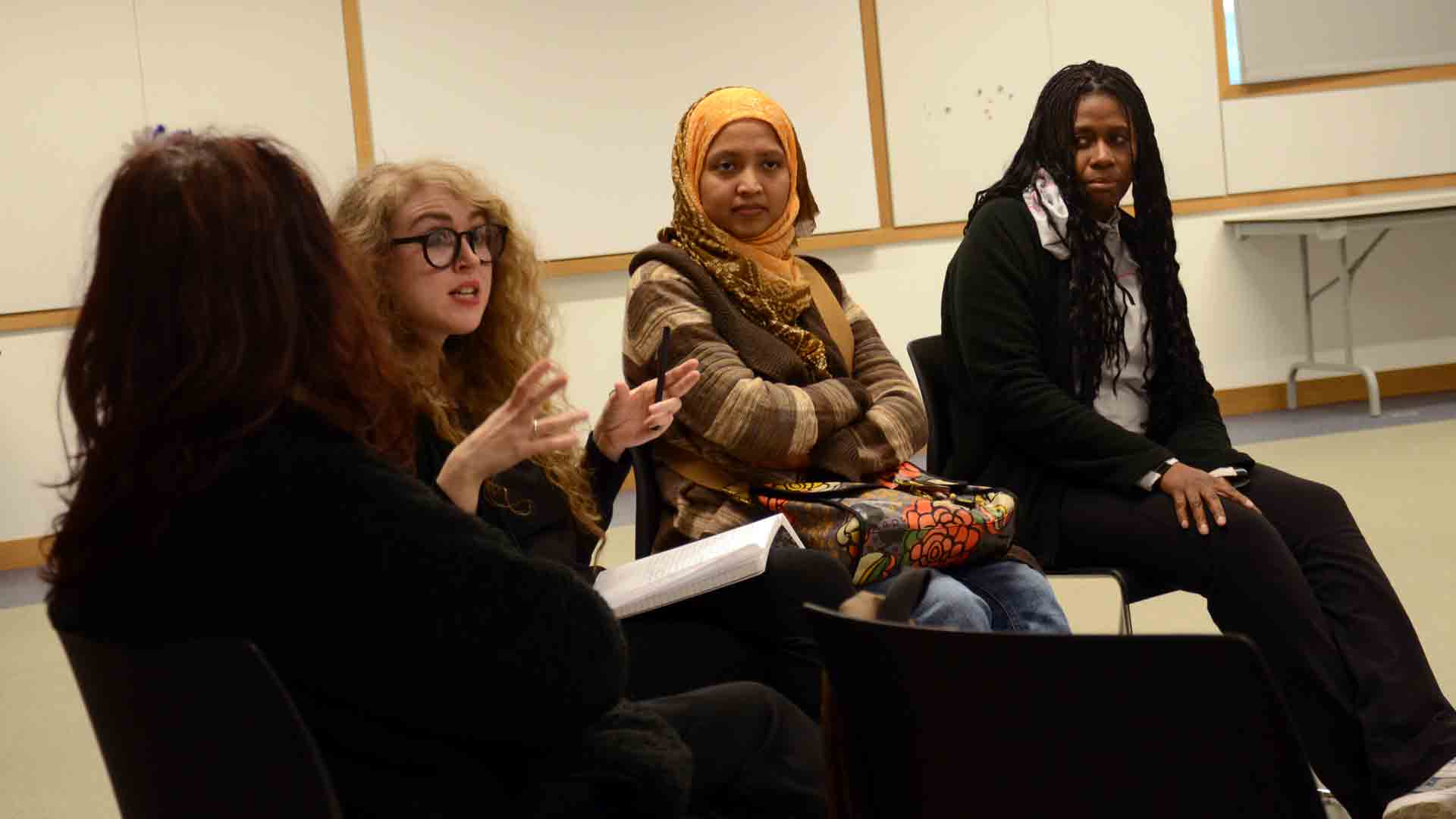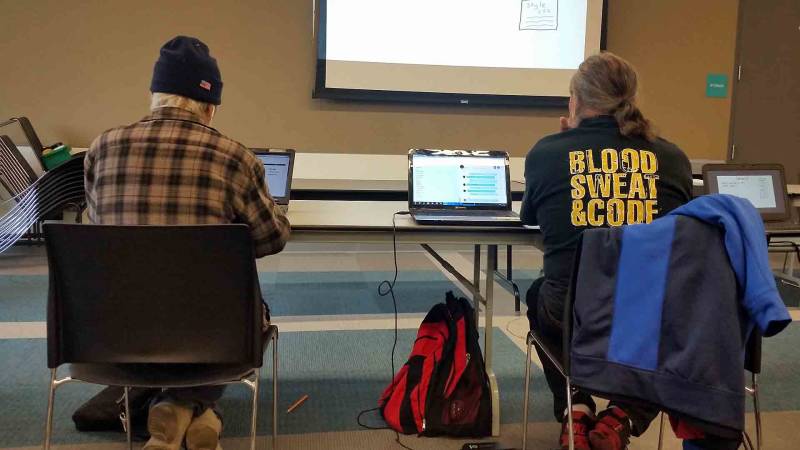“In the HTML/CSS class that we gave last fall, we definitely had some very strong (peer) teachers because they were people who were just coming to the course to brush up on the skills they already have,” said CPL librarian Kristen Edson, who facilitated courses at the Harold Washington Library Center. “They really did become teachers. And it was very awesome to sit there and see someone do that, to identify that they could be a leader and help others.”
Learning Circles aren’t for everyone; some people prefer a more traditional lecture or feel more comfortable having a content expert who has all the answers. But Learning Circles give participants a community, which does a lot to help with motivation. Librarians said it was important to set expectations at the outset, so they developed a Learning Circles contract.
“You come up with this contract: no cell phones, you’ll pay attention, be respectful of your fellow learners,” said Edson “so it gives them a sense of accountability in that first week. How serious they take it, it depends, but I feel like setting some ground rules in the first week is helpful.”

P2PU developed a Learning Circles Facilitator Handbook -- with the input of CPL librarians -- which gives facilitators the tools they need to run a program. Facilitators found that four-to-nine people is a good number for a group. If more people show up for a class, they can be broken up into multiple circles. In order to run a group, librarians set up the space for group learning and make laptops available when needed. The library chooses which free online classes it will support based on local needs, like GED completion, registered nursing exam preparation, academic writing and public speaking.
“Public libraries are often referred to as the people’s university,” said Mark Anderson, director of Learning and Economic Advancement of CPL, at the SXSWEDU conference. Library patrons traditionally come in, find resources, and are left on their own to learn the material. But with the P2PU partnership, funded by a Knight Foundation News Challenge on Libraries grant, Anderson said librarians were able to take a more active role in facilitating learning.
“The idea of working and creating these Learning Circles really helped us move closer to that ideal of being the people’s university to help people progress, with some facilitation on our part,” Anderson said.
Learning Circles are not limited to libraries, but are designed for use somewhere people can come together and take a course online. The model could also be used to fill in gaps in educational offerings both in school and the professional world, according to P2PU learning lead, Grif Peterson. "You can see the Learning Circles that are popping up around the world," he said.
The pilot program has had a broad range of learners, from teenagers to adult professionals, looking to change their careers or improve their skills. One such student was Lupe Philips, a 53-year-old tourism professional. She was between jobs and looking to upgrade her skills. She’s an avid library user, and when she found out about the Learning Circles, she signed up for HTML/CSS, public speaking and novel writing. She said it was a welcoming change to engage with learners and enormously helpful that the courses were free.
“It was an avenue for me to upgrade my skills,” said Philips. “I may not be a master, but at least I have some concept of working HTML.”
Learning Circles introduced her to MOOCs for the first time, and she appreciated the feedback from her peers and facilitators in a small group setting.
“They did provide some critical feedback that I thought was necessary and I don’t think you would get that if you were taking an online course by yourself and not having to be accountable in a week’s time,” said Philips.

Getting people to the Learning Circles required some marketing outreach. Librarians attended local events and posted offerings on CPL's website. Much of their marketing efforts were low-tech: fliers in and around libraries, coffee shops and community centers. Libraries, in general, have some work to do in spreading the word about the services they offer; a recent Pew Research Center survey found that many people don’t know about education resources offered by libraries. Of people surveyed by Pew, half didn’t know if their local libraries offered online programs for GED completion or mastery of new skills.
CPL's outreach efforts helped a new population of learners take advantage of MOOCs -- 90 percent of those who attended a Learning Circle heard about it through the library and 65 percent of those had never taken an online course before, said Peterson. Retention rates were around 45 – 55 percent, according to Peterson. He also noted that students were more compelled to take online courses on their own after the guided experience and continued to do work outside of the learning circles.




